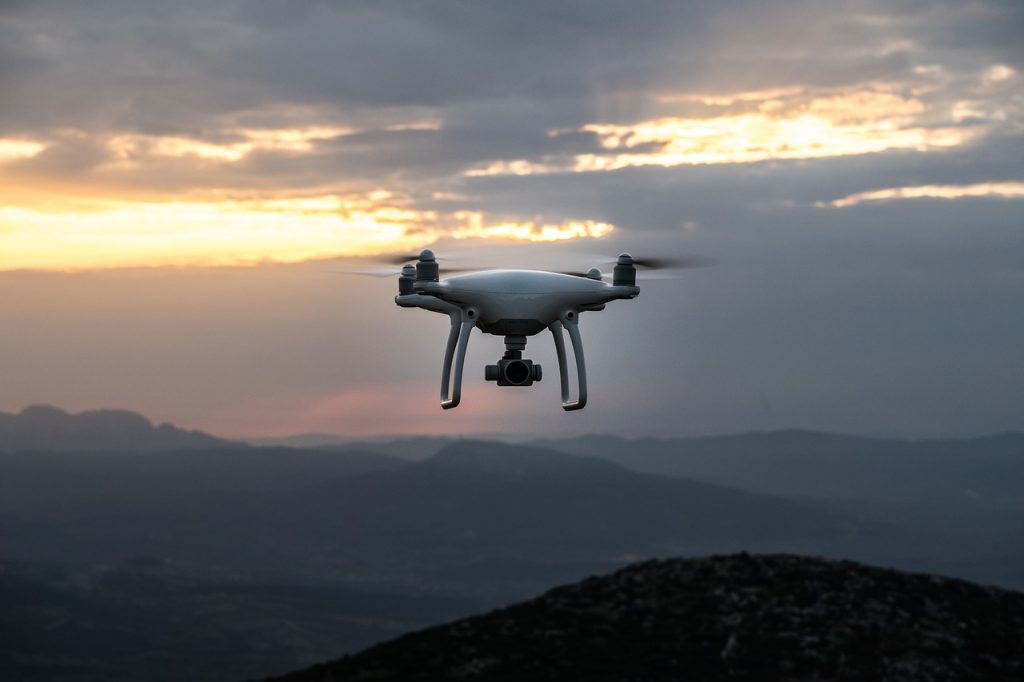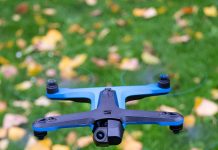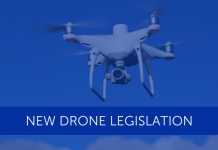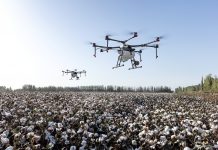How High Can A Drone Fly? Important Tips For Smooth, Satisfying and Legitimate Flights
Table of Contents
It’s just so fantastic when you finally get hold of your new drone, and your initial urge would be to immediately take it to the skies. However, doing so makes you prone to committing the common mistakes of flying your new machine.
How high can a drone fly? This is something that you should take note of along with the important tips of how to avoid the common errors of piloting.
The mistakes referred to above are typically caused by lapses in common sense, and luckily, they could be thwarted by recognizing the situation. For another thing, you have to be prepared at how these problems can creep up. They can do so quickly and take you by surprise.
The FAA has recently updated their regulations, and one of them is displaying the drone registration number on the exterior. It should be affixed in a way that it is visible, such as through a sticker, marker or an engraving.
Likewise, the FAA necessitates pilots to obtain authorization prior to flying in controlled airspace.
Before Anything, Make Sure That Your Flight Is Legal

It is imperative to register your quadcopter before flying it.
Generally, there are no specific instructions that come with crafts pertaining to what you are permitted and not permitted to do with them. In the United States, drones that weigh at least 0.55 pounds have to be registered and adhere to exacting aeronautical guidelines. Below is the short version of these, in terms of how high can a drone fly, among other things.
- You can only fly your machine at no more than 400 feet from the ground
- See to it that your quadcopter is within your sight when it flies, or else it should be brought in
- Fly your machine away from airports
- Do not fly near airplanes because they have the right of way in the sky
- If there are people below, fly your drone away
- Stadiums and sports events are not safe places to fly over
- It is prohibited to operate your craft above car crashes, fire buildings and such emergency situations
- Do not pilot your drone if you are under influence
- Take note of controlled airspace
In brief (as with regards to controlled airspace) you are not allowed to operate your machine within a 5-mile distance from an airport. To be able to do so, first acquire authorization from the concerned air traffic controller about the time and location of your flight.
If you are flying to get paid or some other kind of compensation, you are required to follow another set of rules, and a commercial drone license is necessary.
As a gist, remember that you are not at liberty to fly your drone in any outside airspace that you wish. The rules are quite easy to understand and comply with. Primarily consider safety, and you should have an undeterred flying pleasure.
Fly Your Drone Only When Environmental Conditions Are Right

It’s easy to get tempted to put your amazing new toy drone or flying camera in the air as soon as possible. But rein on in your impulses because you have to be aware of the necessary precautions. For instance, and this is very important- wait until conditions are right before flying.
Basically, if the wind is too strong, it might be beyond the capabilities of your machine. If you insist on flying despite thus, you could eventually find yourself climbing a tree to recover it after only 45 seconds of flight.
Consider that when it comes to the wind, the stronger it becomes as you go up higher. Do not be deceived by acceptable ground conditions because higher up is a different scenario.
Prepare For Obstacles Such As Trees and Power Lines

Any sensible pilot knows that they should stay away from obstacles such as power lines and trees. Nonetheless, no matter how cautious you might be, you could be caught off-guard as they can quickly come out.
The wind is a primary cause of your quadcopter swerving off toward the trees, but other than that, there is also the practical RTH or return-to-home function that may be installed on your craft.
If you happen to be flying at a low altitude below a high canopy of trees and the RTH feature of your drone strikes, your quadcopter could be immediately taken up to 60 feet in the air. It could then maneuver over in less than 3 feet and ultimately return to automatically land.
During this instance, you will not be able to reverse the RTH mode and particularly find yourself under the mercy of its auto-pilot function.
Another risk of the RTH relates to how machines recognize their location at point A, and that point B is home. See to it that there is no obstacle within this path, especially if your craft is not equipped with an obstacle avoidance sensor.
The control range and possible interference are two other factors to take into account. If your drone has a small operating range of say, 60 feet, it can easily veer towards the border of its connectivity. When it reaches that point, it will not stop even if it has lost connection to its controller.
What happens next is that the machine would keep operating for what seems to be the longest seconds, cuts its power and then drop from the sky. Be particularly careful if the perimeter of your range is somewhat close to obstacles, such as a tree line.
Two Crucial Factors- The Operating Range Of Your Drone and Controller Interference

For the most part, a drone advertises its effective operating range. This refers to the straight path distance from the controller towards the craft. It is crucial that you stay within this indicated range and prepare to run to your machine in case you slip up.
The FCC has mandated that in the United States, all radio frequency electronics should recognize interference. Although the FAA might not like otherwise, anything up in the blue experiences interference, and it does so quite frequently. As a pilot, you have to get used to and prepare for it. Note that precaution, especially as it affects video feeds from the FPV camera and live-streaming video capacity of your drone towards your phone or controller.
A smart pilot that you are, you ought to be aware to steer clear of flying in places that have high natural magnetic interference because it impedes the GPS functions of your craft. Radio towers, power lines and large structures are particularly bad locations to fly near to. Otherwise, your flight will tend to be unstable, and you would be apt to lose control of your craft.
Practice Flying With Toy-Class and Inexpensive Drones
As with most things, practice makes perfect- including flying a drone. To say the least, you have to be familiar with how your quadcoper works should anything strange happens. Apparently, you have to practice. It’s also smart to start flying with a small device.
A highly recommended trainer is a disposable toy-class unit. You can look through various lists that have been featured about cheap drones for novice pilots. These predominantly are the inexpensive fliers that you can use to be able to get the hang of flying.
A machine with less power is apt for starters. Start small, to bluntly say it, until you work your way up.
You’ll have an amazing time as you know how high can a drone fly and how exciting it is to apply the effective tips and tricks of achieving smooth and satisfying flights.







